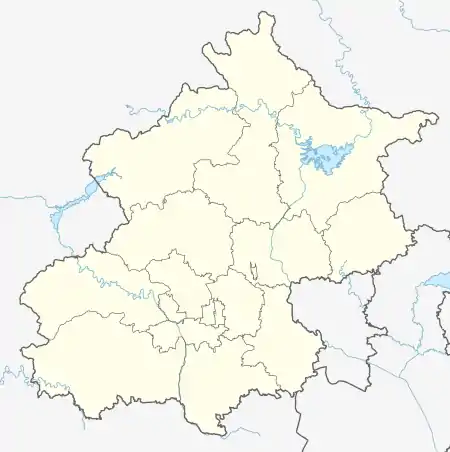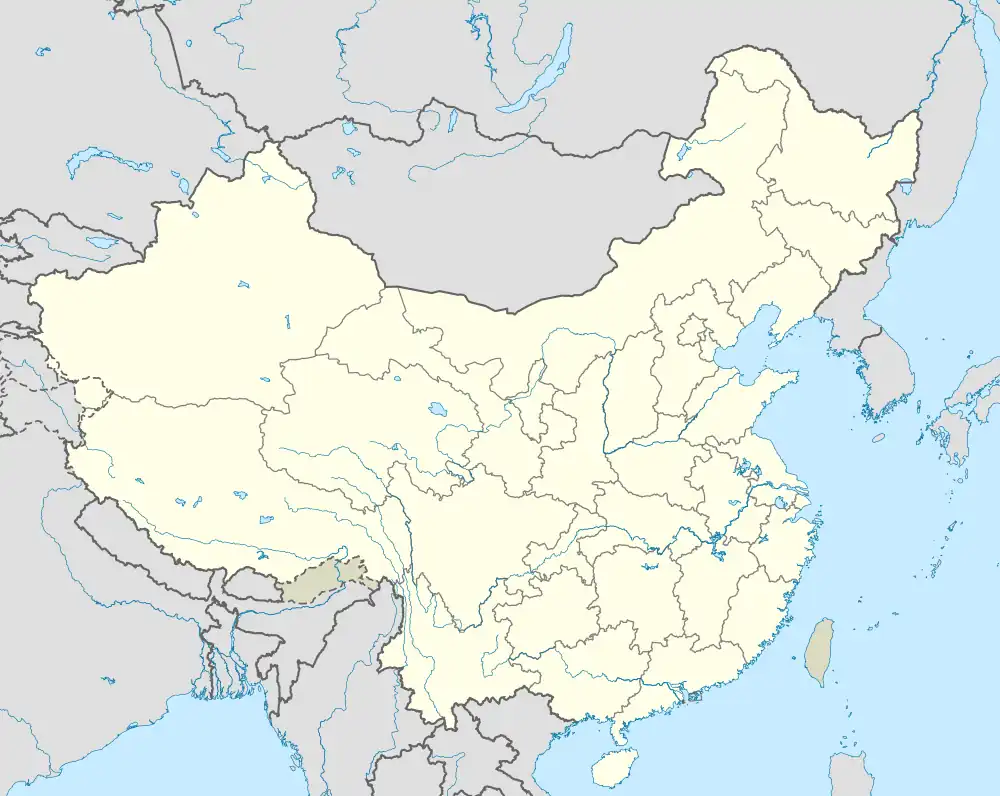Yayuncun Subdistrict
亚运村街道 | |
|---|---|
.jpg.webp) North Star Huiyuan Service Apartments, previously served as the Asian Games Village | |
 Yayuncun Subdistrict  Yayuncun Subdistrict | |
| Coordinates: 39°58′58″N 116°24′11″E / 39.98278°N 116.40306°E 39°58′58″N 116°24′11″E / 39.9828°N 116.4030°E | |
| Country | China |
| Municipality | Beijing |
| District | Chaoyang |
| Area | |
| • Total | 5.13 km2 (1.98 sq mi) |
| Population (2020) | |
| • Total | 67,745 |
| • Density | 13,000/km2 (34,000/sq mi) |
| Time zone | UTC+8 (China Standard) |
| Postal code | 100029 |
| Area code | 010 |
Yayuncun Subdistrict (simplified Chinese: 亚运村; traditional Chinese: 亞運村; pinyin: Yàyùncūn), or Asian Games Village Subdistrict, is the site of the 1990 Asian Games, a major residential area and a subdistrict of the Chaoyang District of Beijing.
Overview
Yayuncun originally referred to a series of residential high-rises and facilities built near Auhui Bridge to accommodate athletes participating in the 1990 Asian Games. It was built simultaneously with the Olympic Sports Center, both designed by Beijing Institute of Architectural Design.[1]
After the Asian Games, Yayuncun gradually developed into a high-end residential area, with numerous buildings including the Olympic Sports Center, Beijing International Conventions Center, Beijing North Star Continental Grand Hotel, Beijing North Star Shopping Center, Celebrity International Grand Hotel, Yuanda Center, and Yan Huang Art Museum. The Fourth World Conference on Women was also held in Yayuncun. The 4th Ring Road crosses the southern proportion of the area.
The Olympic Green is located at the west of Yayuncun.
History
| Year | Status |
|---|---|
| 1925 | Part of North Suburban District |
| 1947 | Part of 7th Suburban District |
| 1952 | Part of East Suburban District |
| 1958 | Part of Datun, Wali Townships and Xiaoguan Subdistrict |
| 1986 | Construction began in preparation for 1990 Asian Games |
| 1989 | Yayuncun Subdistrict was formally created |
Administrative Divisions
At the end of 2021, there are a total of 13 communities within the subdistrict:[3]
| Administrative Division Code | Community Name in English | Community Name in Chinese |
|---|---|---|
| 110105009046 | Anhuili | 安慧里 |
| 110105009047 | Anhuilinan | 安慧里南 |
| 110105009048 | Huayan Beili | 华严北里 |
| 110105009049 | Huayan Beilixi | 华严北里西 |
| 110105009050 | Anxiangli | 安翔里 |
| 110105009051 | Sizhuyuan | 丝竹园 |
| 110105009052 | Beichen Donglu | 北辰东路 |
| 110105009053 | Anyuanli | 安苑里 |
| 110105009054 | Jingmin | 京民 |
| 110105009055 | Qijia Huozi | 祁家豁子 |
| 110105009056 | Anhuilibei | 安慧里北 |
| 110105009057 | Minzuyuan | 民族园 |
| 110105009058 | Anyuan Beili | 安苑北里 |
Landmarks
See also
References
- ↑ "国家奥林匹克体育中心与亚运村,首都之窗,于2013-04-20查阅". Archived from the original on 2015-06-03. Retrieved 2013-04-20.
- ↑ Zhong hua ren min gong he guo zheng qu da dian. Bei jing shi juan. Li li guo, Li wan jun, Wu shi min, 李立国., 李万钧., 吴世民. Bei jing: Zhong guo she hui chu ban she. 2013. ISBN 978-7-5087-4058-4. OCLC 910451741.
{{cite book}}: CS1 maint: others (link) - ↑ "2021年统计用区划代码和城乡划分代码". www.stats.gov.cn. Retrieved 2022-09-24.
External links
 Media related to Yayuncun Subdistrict at Wikimedia Commons
Media related to Yayuncun Subdistrict at Wikimedia Commons